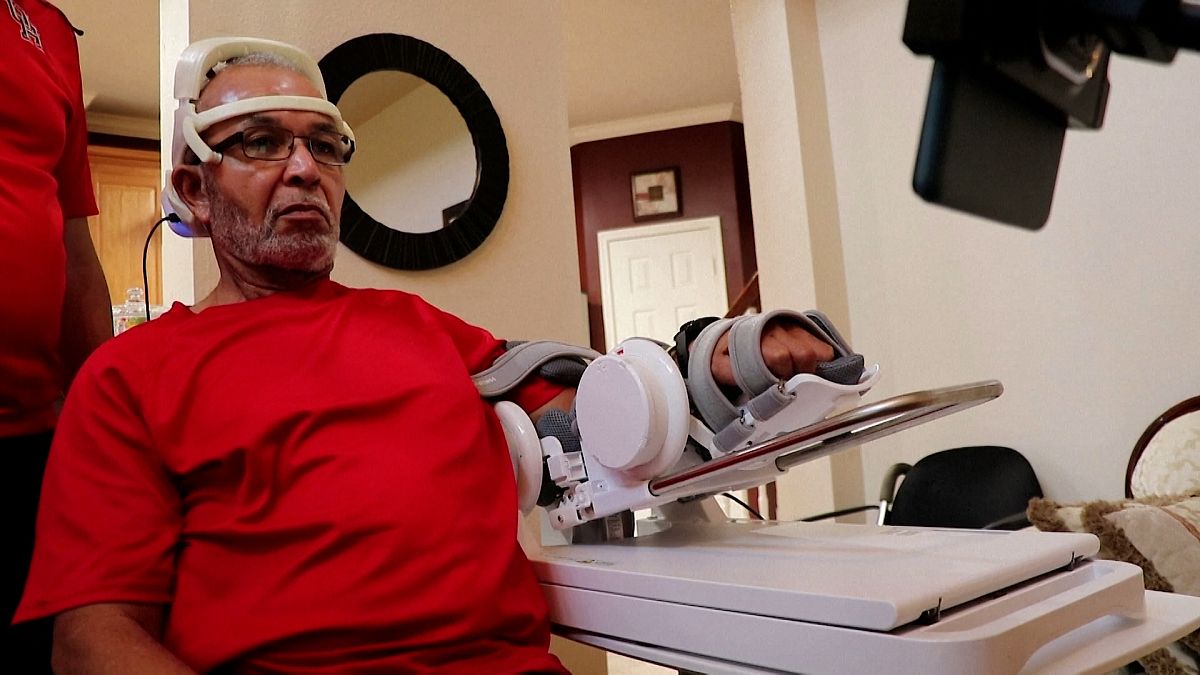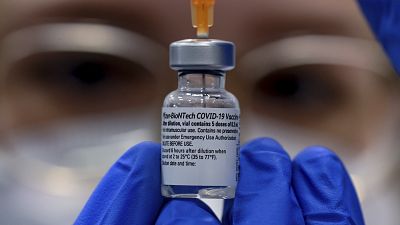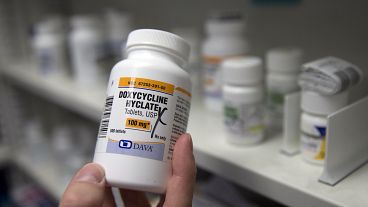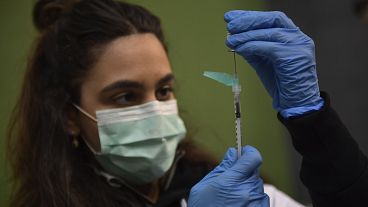The portable headset reads the brain waves of the wearer, triggering a connected robotic arm to move when the person thinks about moving their arm.
Oswald Reedus' life changed overnight in 2014 when he suddenly lost the ability to speak, walk, and move his left arm.
"Around 3 o’clock in the morning, my wife said I was talking out of my head and she woke me up and she said, 'Move your arm'. And I couldn't move my arm," Reedus said.
An estimated 610,000 people in the United States suffer from a stroke for the first time per year and that night, Reedus was among that group.
But now nine years later, Reedus and his wife Elizabeth have new reason to hope for a brighter future.
The 68-year-old is the first stroke patient to use a new device developed by researchers at the University of Houston - a robotic arm controlled by brain waves that could ultimately help him regain the use of his limb.
"I will never take my health for granted anymore," Reedus said.
Through years of therapy, the retired FedEx driver eventually regained his speech, although he had some difficulty due to aphasia caused by the stroke. He has limited mobility in his left arm and uses a brace on his left leg to walk.
He is also not the first in his family to suffer from a stroke with both his mother and younger brother having died from the condition. As such, he was extremely keen to partake in clinical trials for the experimental new device.
The portable headset reads the brain waves of the wearer, triggering a command for a connected robotic arm to move when the person thinks about moving their arm.
The headset is known as a brain-computer interface and has five electrodes built into it that rest on the wearer’s scalp, measuring the brain’s electrical impulses, or brain waves, through a process called electroencephalography, or EEG.
Once the connected robotic arm is prompted by these electrical impulses, it starts moving but it also requires the wearer to put forth effort into moving the arm.
Neuroplasticity
The headset’s lead designer, University of Houston engineering professor Jose Contreras-Vidal, said the call-and-response between the brain, body, and robotic movement helps rewire a stroke patient’s brain to gradually regain limb movement through a process called neuroplasticity.
"The headset detects the movement intent and that top-down signal goes to the robot to assist with the movement and in return, the movement generates feedback back to the brain," Contreras-Vidal said.
"And when you have top-down information meeting, within a time window, bottom-up information, that leads to neuroplasticity… And that's what changes the brain".
Contreras-Vidal believes that the headset, which is connected to either an exoskeleton or a robotic arm, could provide an at-home option for stroke rehabilitation.
The device is currently undergoing clinical trials as part of a collaboration between the University of Houston and TIRR Memorial Hermann hospital in Texas.
The clinical lead on the project, Dr Gerard Francisco, a stroke rehabilitation doctor at UTHealth Houston and TIRR Memorial Hermann, said robots could soon augment the work of physical therapists for stroke patients.
"Robots will provide a repetitive, predictable movement," Dr Francisco said.
"Robots will not get tired so that it can provide the necessary amount of repetitions - because we know that a certain amount of repetition is required in order for us to rewire that part of the brain that is responsible for movement," he added.
Francisco hopes that the participants’ brain wave data will assist researchers in developing future programmes to assist stroke patients in robotic rehabilitation.
Future plans
Reedus used the headset and robotic arm at his home for six weeks in his rehabilitation and said that partaking in the trial as well as meeting other stroke survivors in the process was instrumental in pulling him out of isolation. He had been depressed for eight years after his stroke.
"Anything that will help a person like me, I think, is a godsend," Reedus said. "If they can get the price down or if the insurance companies will say yes instead of no, it will help a lot of people. I only wish that this device was around when I had my stroke," he said.
Still, the device is a long way from falling into the hands of consumers according to Contreras-Vidal.
His team is still in the testing and fundraising stages of developing the headset. Ultimately they aim to raise enough money for a larger clinical trial and eventually apply for FDA approval.
A brain-computer interface and robotic exoskeleton controlling the hand and wrist designed at Washington University in St Louis was authorised by the FDA in April 2021.
For more on this story, watch the video in the media player above.



